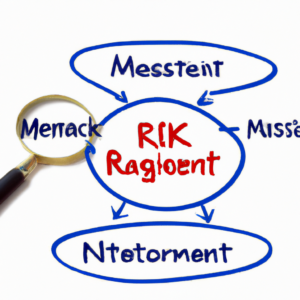
A Guide to Investing in International ETFs
# How to Invest in International ETFs
Investing in international Exchange-Traded Funds (ETFs) is an excellent way for investors to diversify their portfolios beyond their home country’s stocks and bonds. International ETFs provide exposure to foreign markets, which might include developed, emerging, or frontier markets depending on the ETF. This guide outlines the steps and considerations for investing in international ETFs.
##
Understanding International ETFs
Before diving into investing, it’s crucial to understand what international ETFs are and how they function. An ETF is a type of investment fund and exchange-traded security, which means it is traded on major stock exchanges. ETFs hold assets such as stocks, commodities, or bonds and generally operate with an arbitrage mechanism designed to keep the trading close to its net asset value, though deviations can occasionally occur.
International ETFs specifically target non-domestic markets, offering a basket of foreign stocks or bonds. This allows investors to gain international exposure without the need to directly invest in overseas stock markets, which can be complicated and costly.
##
Benefits of Investing in International ETFs
###
Diversification
Investing in markets outside of your home country can reduce risk through diversification, as economic downturns in one country or region might not affect others in the same way.
###
Accessibility
International ETFs make it easier for individual investors to access foreign markets, which might be difficult or impossible to invest in directly due to regulatory or logistical issues.
###
Cost-Effectiveness
ETFs typically come with lower fees compared to mutual funds, and owning an ETF that trades on local exchanges eliminates the need to convert currency, saving on potential conversion fees.
##
How to Invest in International ETFs
Investing in international ETFs involves several steps, from choosing the right ETF to making the purchase.
###
1. Research
Start with thorough research to identify the international ETFs that best fit your investment goals. Consider the regions or countries you wish to invest in, the sectors you believe will perform well, and the risks you are willing to take.
###
2. Assess the Risks
Understand the political, economic, and currency risks associated with the countries in the ETF. Emerging markets tend to offer higher growth potential but come with higher risks compared to developed markets.
###
3. Choose a Brokerage
Select a brokerage that gives you access to international markets and ETFs. Many online platforms now offer a wide array of international ETFs, so compare their fees, ease of use, and the investment tools they provide.
###
4. Evaluate the ETFs
When choosing an ETF, look at its expense ratio, liquidity, underlying assets, and performance history. A lower expense ratio can significantly affect returns over time, and high liquidity ensures you can buy and sell shares easily.
###
5. Place an Order
Once you’ve chosen an international ETF to invest in, it’s time to place an order through your brokerage account. Decide on the number of shares you want to buy and whether to use a market order (buying at the current market price) or a limit order (setting a specific price at which you’re willing to buy).
##
Conclusion
Investing in international ETFs can be a smart way to diversify your investment portfolio, offering potential growth opportunities outside of your home market. By following the steps outlined above and conducting thorough research, you can make informed decisions and select the international ETFs that best fit your investment strategy and goals. Remember, while international ETFs can offer lucrative opportunities, it’s important to be mindful of the risks and continuously monitor the performance of your investments.

